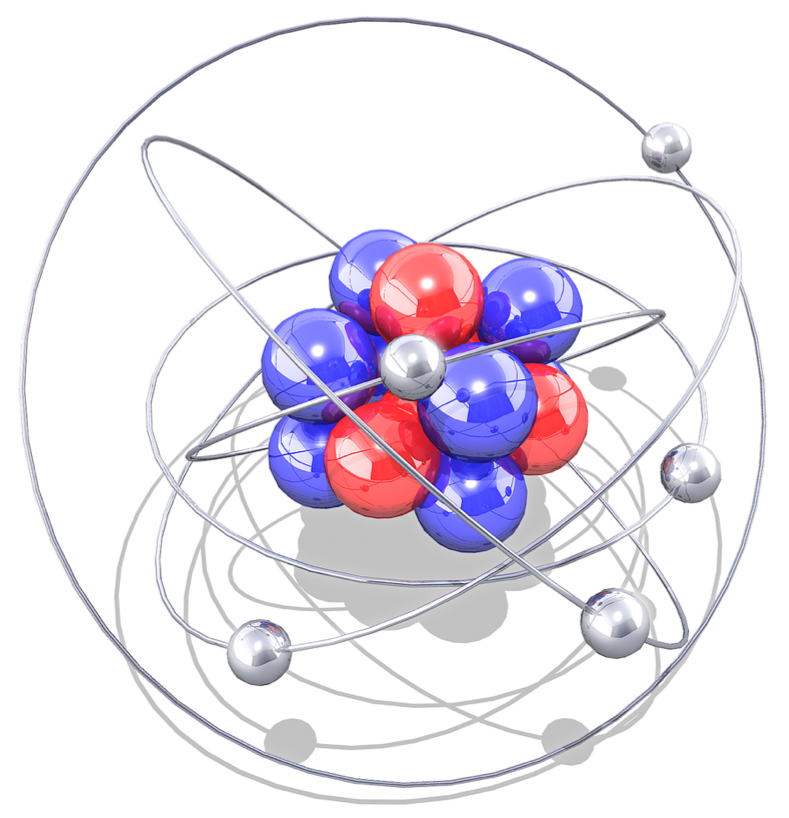Nuclear spin, denoted by the symbol I, is the total spin angular momentum of the nucleus of an atom.

The nucleus, with the exception of the hydrogen nucleus, is composed of protons and neutrons. Just like the electron, both a proton and a neutron possess an intrinsic angular momentum, or spin, with a value of ½. Another similarity between protons and electrons is that protons may pair up with anti-parallel spins, which results in a net proton spin of zero for each proton pair. The ½ spin and pairing up characteristics are also inherent in neutrons.
Simplistically, we can regard nuclear spin I as the collective spins of protons and neutrons in the nucleus. Although there isn’t a formula to predict the number of proton pairs and neutron pairs in an atom, we can generalise the relationship between protons, neutrons and I as follows:
| No. of protons | No. of neutrons | I |
| even | even | 0 |
| odd | odd | 1 or 2 or 3 or… |
| even | odd | ½ or 3/2 or 5/2 or… |
| odd | even | ½ or 3/2 or 5/2 or… |
For example, 17O has 8 protons and 9 neutrons. According to the table above, we would expect = 1/2 or 3/2 or 5/2…. If 17O has 4 anti-parallel pairs of protons and 4 anti-parallel pairs of neutrons, its nuclear spin will be 1/2. However, experimental results show that
= 5/2, which means that 17O has a total of 6 pairs of protons and neutrons.
Other examples are: = 1/2 (one proton) and
= 0 (6 protons and 6 neutrons). The difference in nuclear spins for 1H and 12C (and other isotopes – see table below) is exploited in an important analytical technique in chemistry called nuclear magnetic resonance.
|
I |
Isotopes |
|
0 |
12C, 16O |
|
1/2 |
1H, 13C, 15N, 19F, 29Si, 31P |
|
1 |
2H, 14N |
| 3/2 |
11B, 23Na, 35Cl, 37Cl |
| 5/2 |
17O, 27Al |
| 3 |
10B |
Just as the electron spin quantum number s is associated with the electron spin magnetic number ms, where ms = –s, –s + 1 …0 … s – 1, s, the nuclear spin number I is related to the nuclear spin magnetic number mI, where mI = –I, –I + 1 …0 … I – 1, I. For 1H, mI = –1/2 or mI = +1/2, i.e. 2 possible spin orientations.

Question
What is a boson and what is a fermion?
Answer
A boson is a particle whose total spin is an integer (0,1,2,…), while a fermion is one whose total spin is a half-integer (1/2, 3/2, 5/2,…). For example, the nuclei 12C and 16O are bosons, whereas the nuclei 17O, 27Al are fermions. Fermions are subject to the Pauli exclusion principle, which states that no two identical fermions can occupy the same quantum state. In contrast, multiple bosons can occupy the same quantum state.